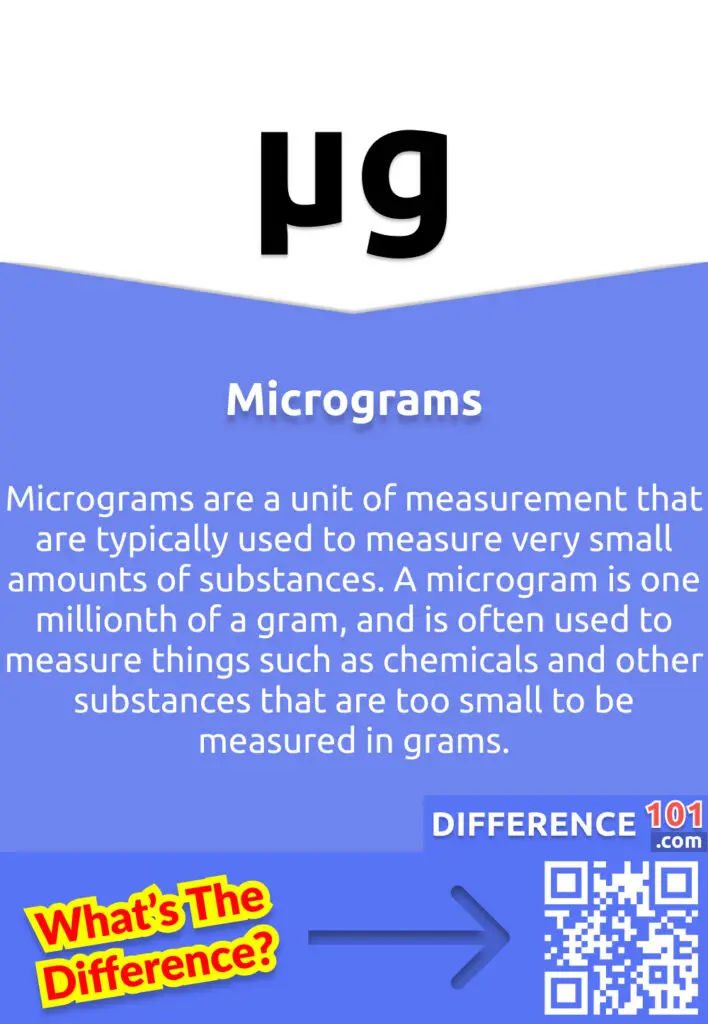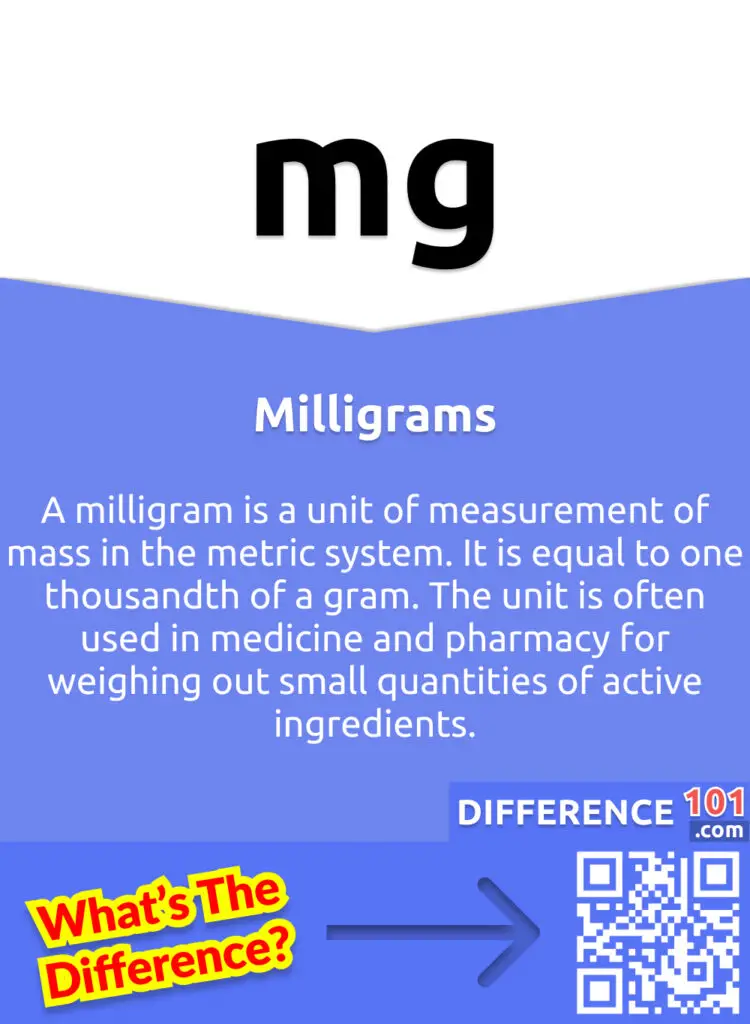Micrograms and milligrams are two units of measurement for mass. A microgram is one millionth of a gram, while a milligram is one thousandth of a gram. The difference in size between a microgram and a milligram is significant, and it’s important to know which unit of measurement is being used when reading labels or taking medication. Micrograms are often used for measuring very small amounts of substances, such as vitamins and minerals. Milligrams, on the other hand, are used for measuring larger amounts of substances, such as medication.
Table of Contents
What are Micrograms?

Micrograms are a unit of measurement that are typically used to measure very small amounts of substances. A microgram is one millionth of a gram, and is often used to measure things such as chemicals and other substances that are too small to be measured in grams.
What are Milligrams?

A milligram is a unit of measurement of mass in the metric system. It is equal to one thousandth of a gram. The unit is often used in medicine and pharmacy for weighing out small quantities of active ingredients.
Key Differences Between Micrograms And Milligrams
There are a few key differences between micrograms and milligrams. Firstly, micrograms are a much smaller unit than milligrams. This means that micrograms are used to measure very tiny masses, while milligrams are used to measure slightly larger masses. Secondly, micrograms are typically abbreviated as “mcg” or “μg”, while milligrams are typically abbreviated as “mg”. Finally, one milligram is equal to 1000 micrograms. This means that when converting from micrograms to milligrams, you would divide the micrograms by 1000.
Micrograms vs. Milligrams Similarities
Micrograms (μg) and milligrams (mg) are both units of measurement for mass. A microgram is one millionth of a gram, while a milligram is one thousandth of a gram. Both units are used to measure the mass of small objects.
Despite their small size, micrograms and milligrams are still SI units of measurement and are therefore used internationally. They are often used in the fields of medicine and science, where very small masses need to be measured accurately.
- They are both units of measurement for mass.
- They are both SI units of measurement.
- They are both used to measure small objects.
Micrograms vs. Milligrams Pros and Cons
Micrograms Pros & Cons

Micrograms Pros
- They are more precise.
- They can be used to measure very small quantities.
Micrograms Cons
- It is a very small unit, and as such, it can be difficult to measure accurately.
- The microgram is not a standard unit of measurement, and as such, it can be difficult to compare measurements made in different units.
- The microgram is a relatively new unit of measurement, and as such, there are not yet many standards or conventions associated with its use.
Milligrams Pros & Cons

Milligrams Pros
- It is precise and it can be used to measure small quantities of substances.
- It is easy to convert into other units of measure, such as grams, and milliliters.
Milligrams Cons
- It is a very small unit of measurement, making it difficult to measure accurately.
- It is also a very commonly used unit of measurement, making it easy to confuse with other units such as the gram.
Comparison Chart

Comparison Video
Conclusion
In conclusion, the difference between the two units is that micrograms is a measurement of 1 millionth of a gram, or 0.000001 grams, and milligrams (mg) is a measurement of 1 thousandth of a gram, or 0.001 grams.







